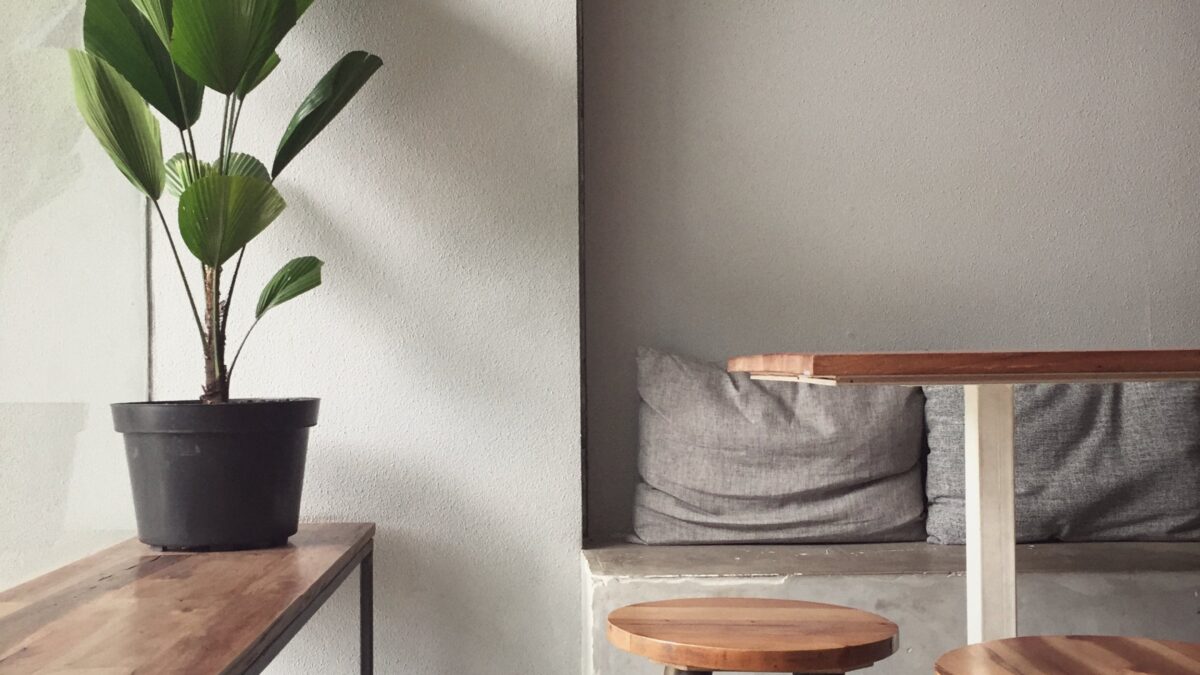Hey there, friends! 
So, I did a bit of digging, and guess what? I found out about eight awesome design styles that are all about promoting well-being! From bringing nature indoors to embracing simplicity, each of these styles has its own unique benefits for our health and happiness.
In this guide, I’m excited to share what I’ve learned with you all. We’ll take a closer look at each design style, explore its health benefits, and maybe even get some ideas for sprucing up our own spaces. So, grab a cup of tea (or your beverage of choice) and let’s dive in together!
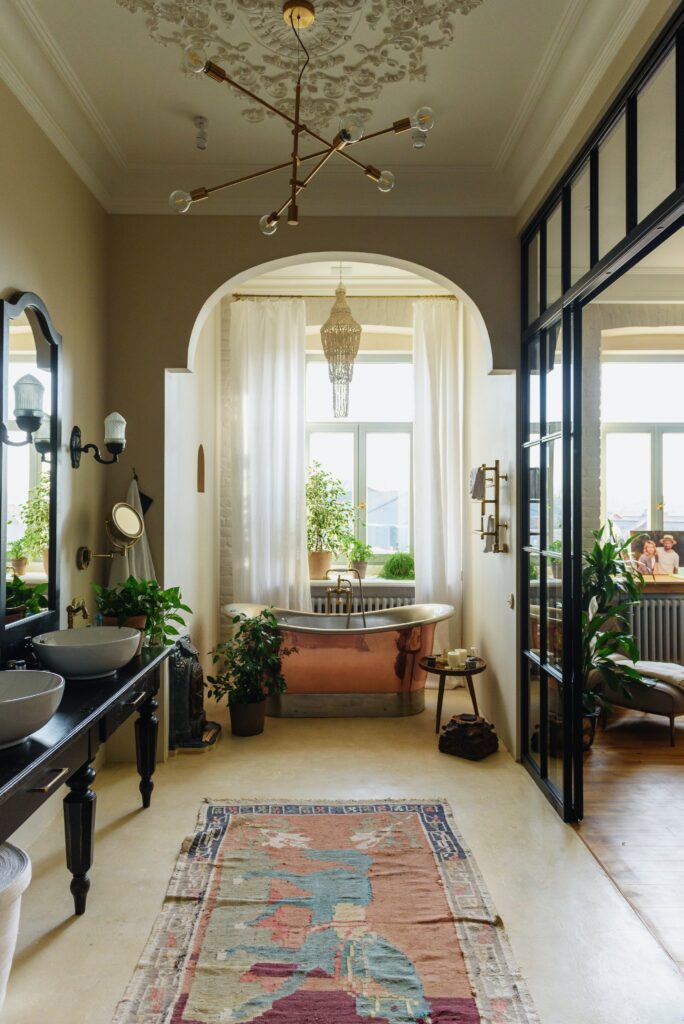
Biophilic Design
Hey there, nature lovers! 
Biophilic Design: Bringing the Outdoors In for a healthy home
So, what exactly is biophilic design? Well, imagine bringing the great outdoors inside your home—sounds cool, right? That’s basically what biophilic design is all about! It’s all about blurring the lines between indoor and outdoor spaces by incorporating natural elements like plants, natural light, and organic materials into our interiors.
Discovering the Benefits of Biophilic Design
But here’s the best part: biophilic design isn’t just about making our homes look pretty (although that’s definitely a bonus!). It’s also about boosting our health and well-being. Yep, you heard that right! Studies have shown that being surrounded by nature—whether it’s real or simulated—can do wonders for our physical and mental health. From purifying the air we breathe to reducing stress and anxiety, biophilic design has some pretty awesome benefits!
Features of Biophilic Design:
Abundant Natural Light: Large windows, skylights, and glass doors flood the space with sunlight, creating a bright and airy atmosphere.
Indoor Greenery: Incorporating plants into the design adds a touch of nature and improves air quality, making the space feel more vibrant and alive.
Natural Materials: From wood and stone to bamboo and cork, using organic materials brings the textures and colors of the outdoors inside, adding warmth and character to the space.
Water Features: Whether it’s a small fountain, a pond, or even a decorative bowl of water, incorporating water elements can create a sense of tranquility and relaxation.
Views of Nature: Designing spaces to frame views of nature, whether it’s a garden, a park, or a scenic landscape, helps to connect occupants with the natural world outside.
Ready to Dive In? Tips for Incorporating Biophilic Design
So, if you’ve ever dreamed of turning your home into a peaceful oasis where you can escape the hustle and bustle of daily life, biophilic design might just be the perfect fit for you. Get ready to let nature in and reap the rewards of a greener, healthier home!
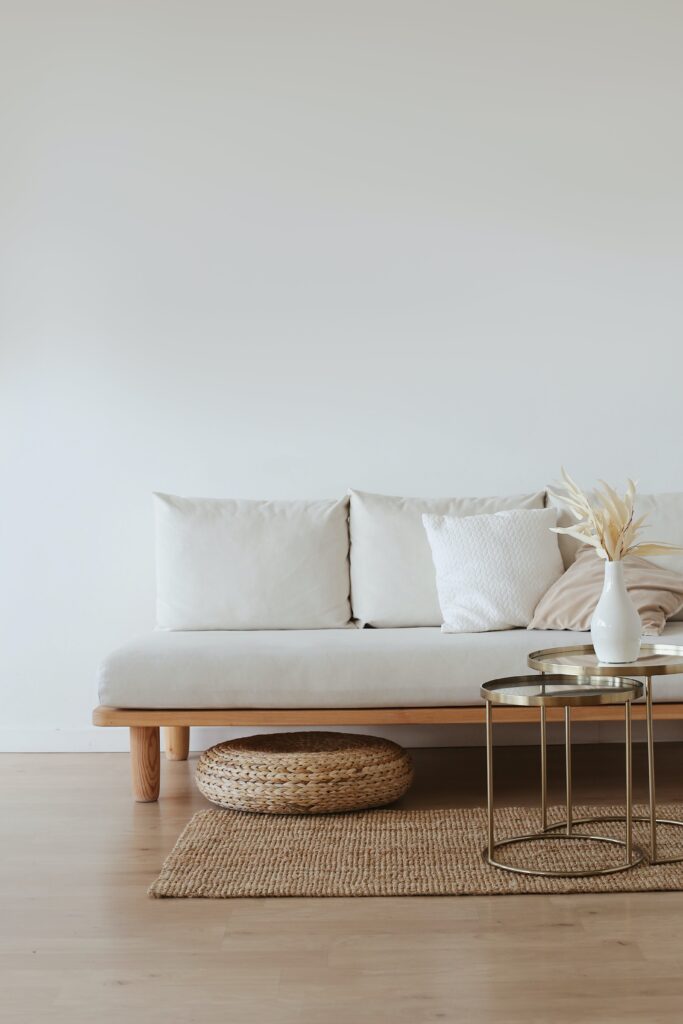
Embracing Simplicity: Discovering the Wonders of Minimalist Design”
Minimalism: Less is More
So, what exactly is minimalist design? Well, picture a space with clean lines, uncluttered surfaces, and a serene color palette. Minimalism is about paring down to the essentials and creating a sense of calm and clarity in your home. It’s like a breath of fresh air in a world filled with noise and distractions.
Exploring the Benefits of Minimalism
But minimalist design isn’t just about aesthetics. It’s also about creating a space that supports your well-being and enhances your quality of life. By eliminating excess stuff and focusing on what truly matters, minimalist interiors can help reduce stress, increase productivity, and promote a sense of peace and tranquility.
Features of Minimalist Design:
Simplified Aesthetic: Think clean lines, simple shapes, and a neutral color palette that creates a timeless and elegant look.
Functional Spaces: Every piece of furniture and decor serves a purpose, with no room for clutter or unnecessary embellishments.
Quality Over Quantity: Minimalism values craftsmanship and durability, with a focus on investing in well-made pieces that will stand the test of time.
Ready to Embrace Minimalism? Tips for Getting Started
Declutter Mindfully: Start by decluttering your space room by room, focusing on one area at a time. As you go through your belongings, ask yourself if each item serves a purpose or brings you joy. Donate or discard anything that no longer serves you.
Simplify Your Decor: Keep your decor minimal by opting for clean lines, uncluttered surfaces, and a neutral color palette. Choose furniture and accessories that are both functional and visually appealing, avoiding unnecessary embellishments.
Maximize Storage Solutions: Invest in storage solutions that help you keep your space organized and clutter-free. Utilize baskets, bins, and shelves to store belongings out of sight, creating a tidy and streamlined environment.
Focus on Quality Over Quantity: When purchasing new items for your home, prioritize quality over quantity. Invest in well-made pieces that are built to last, rather than opting for cheap, disposable furnishings.
Create Zones for Different Activities: Designate specific areas in your home for different activities, such as work, relaxation, and dining. Keep each zone purposeful and free from distractions, allowing you to fully focus on the task at hand.
Practice Daily Maintenance: Make it a habit to tidy up your space daily to prevent clutter from accumulating. Spend a few minutes each day putting things back in their place and maintaining the orderliness of your home.
Embrace Mindful Consumption: Adopt a mindful approach to consumption by being intentional about the items you bring into your home. Before making a purchase, consider whether it aligns with your values and adds value to your life.
By incorporating these practical tips into your lifestyle, you’ll be well on your way to creating a minimalist haven that promotes peace, clarity, and serenity in your home.
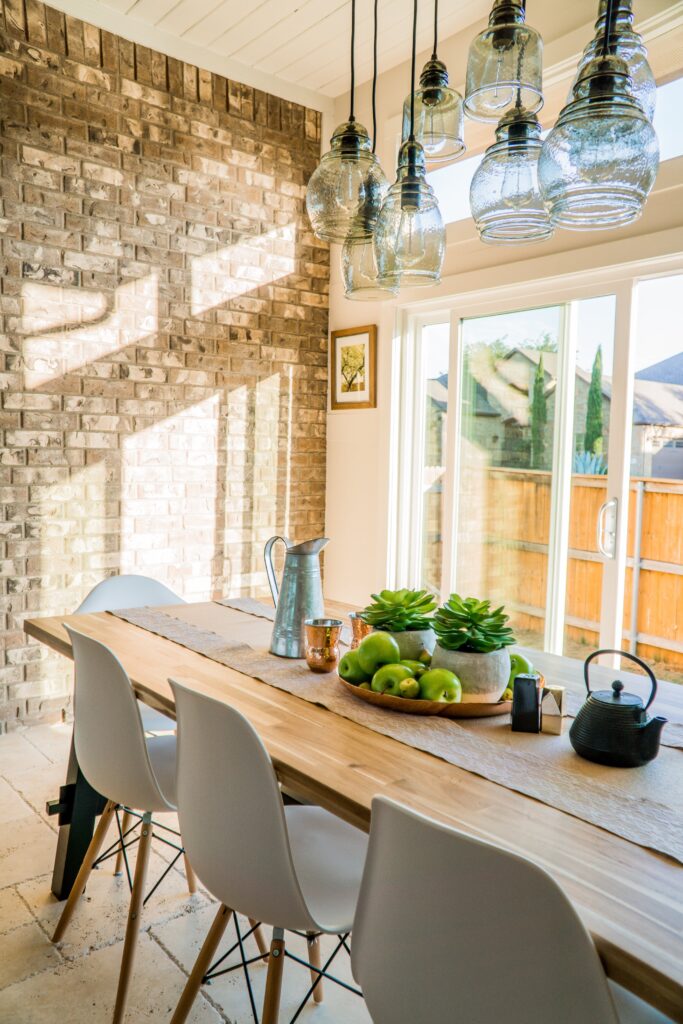
Unleashing Harmony with Feng Shui
Alright, folks, let’s dive into the magical world of Feng Shui! 
So, what’s the deal with Feng Shui? Well, imagine your home as a big ol’ energy playground, and Feng Shui is the game plan for making sure all the energy flows smoothly and feels super cozy.
Here are some Feng Shui hacks to sprinkle a little extra magic into your healthy home:
Clear Clutter: Say “bye-bye” to clutter and “hello” to good vibes! Clear out any unnecessary stuff cluttering up your space to create a clean and serene environment.
Balance Elements: Think of your home as a mini nature retreat and bring in elements like wood, fire, earth, metal, and water to keep the energy flowing. Mix and match textures, colors, and materials to create a harmonious vibe.
Let There Be Light: Natural light is your BFF in Feng Shui land, so let it shine, baby! Open up those curtains, position mirrors strategically, and let that sunlight flood in like nobody’s business.
Furniture Feng Shui: Arrange your furniture like a boss to keep the energy flowing freely. Avoid blocking doorways or cramming furniture into tight spaces—give everything some breathing room to keep the good vibes flowing.
Commanding Position: Ever heard of the “commanding position”? It’s all about feeling like a boss in your own space by positioning your bed, desk, or stove so you can see the door without being directly in line with it. It’s like having your own personal energy fortress!
Nature’s Touch: Bring a little piece of the great outdoors inside by adding plants, water features, and natural materials to your space. Nature is the OG healer, so surround yourself with greenery and good vibes.
Personalize with Purpose: Your space should reflect you, so fill it with items that spark joy and good vibes. Whether it’s a funky piece of art, a cozy blanket, or a quirky knick-knack, let your personality shine through and make your space uniquely yours.
Alright, friends, now that you’re armed with some Feng Shui wisdom, go forth and Feng Shui like a boss! Remember, good vibes only!
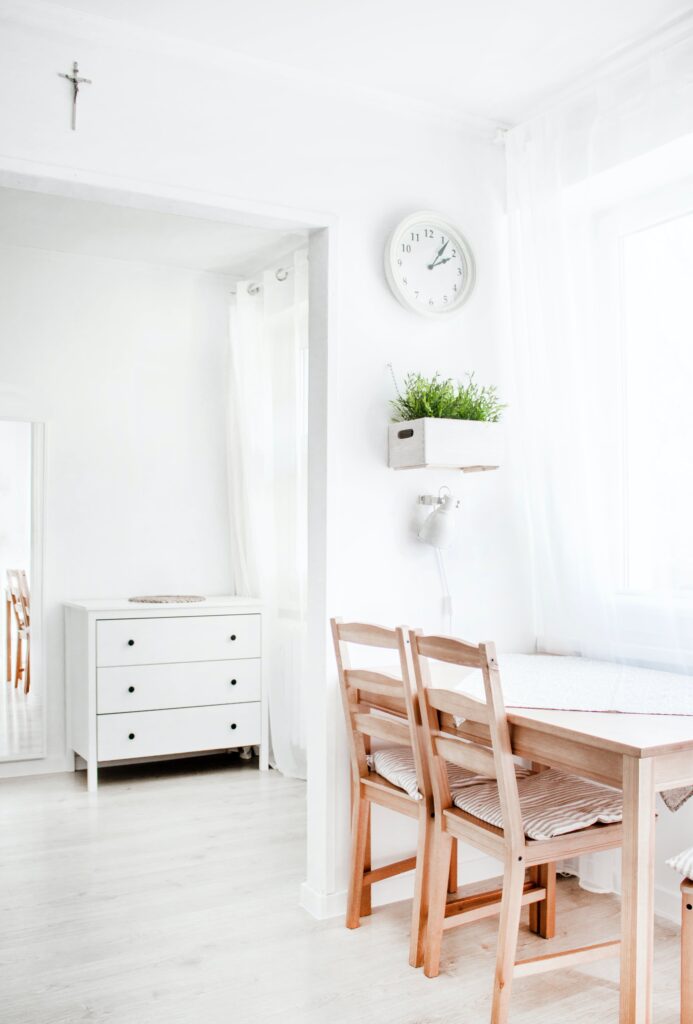
Scandi Chic: Embracing the Cozy Vibes of Scandinavian Design
Alright, folks, let’s cozy up and talk about everyone’s favorite design trend—Scandinavian style! 
So, what’s the scoop on Scandinavian design? Well, it’s all about creating spaces that are equal parts stylish and functional, with a healthy dose of coziness thrown in for good measure. Think clean lines, natural materials, and a neutral color palette that’s as soothing as a hot cup of cocoa on a snowy day.
Here are some Scandi-inspired tips to bring a little Nordic magic into your home:
Light It Up: Natural light is key in Scandinavian design, so let it pour in like there’s no tomorrow! Swap heavy curtains for sheer fabrics, embrace white walls, and add mirrors to bounce that sunlight around like a pro.
Go Minimalist: Less is definitely more in Scandi land, so channel your inner Marie Kondo and declutter like nobody’s business. Stick to essential furniture pieces, clear out any unnecessary clutter, and let your space breathe.
Bring in Nature: Scandinavians are all about their connection to nature, so channel those outdoorsy vibes by adding plenty of greenery to your space. From potted plants to leafy prints, bring a little piece of the great outdoors inside and let Mother Nature work her magic.
Cozy Textures: Get ready to snuggle up in style with all the cozy textures Scandi design has to offer. Think plush rugs, chunky knit throws, and soft sheepskin cushions—anything that screams “curl up with a good book and a cup of tea.”
Embrace Hygge: Ah, hygge—the Danish concept of coziness and contentment. Channel your inner hygge guru by creating cozy nooks, lighting candles, and inviting friends over for a hearty meal. It’s all about embracing the simple pleasures of life and finding joy in the little things.
So, there you have it, friends—your crash course in all things Scandi chic! Now go forth and embrace the cozy vibes of Scandinavian design. After all, who needs a plane ticket to Sweden when you can create your own Nordic paradise right at home?
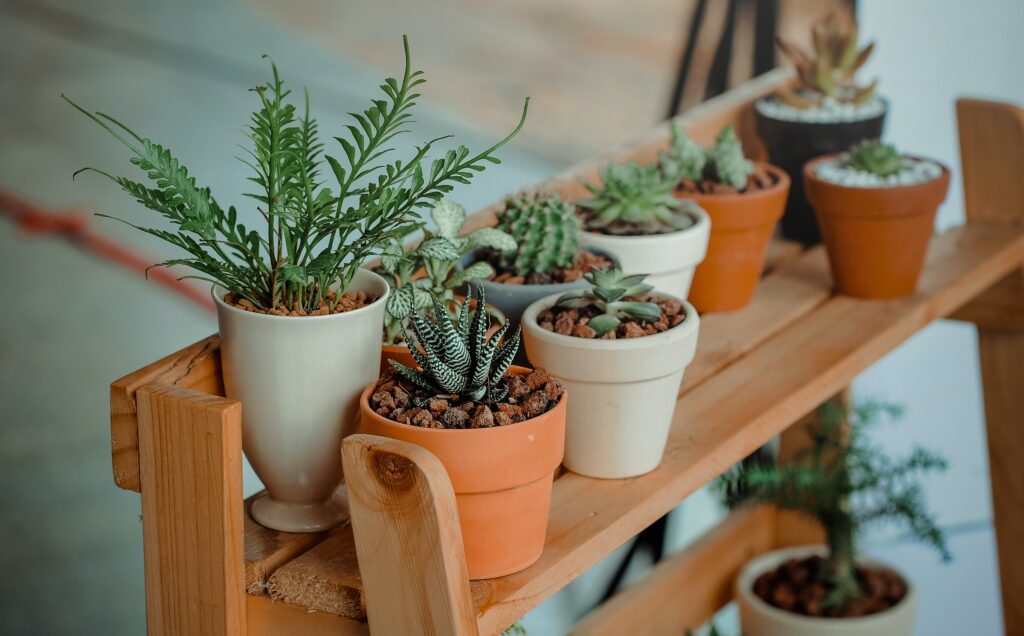
Sustainable Style: Eco-Friendly Design That’s Good for You and the Planet!
Hey there, eco-warriors! 
So, what exactly is sustainable design?
Well, it’s all about creating spaces that are as easy on the planet as they are on the eyes. From eco-friendly materials to energy-efficient features, sustainable design is the ultimate way to show Mother Earth some love while sprucing up your home sweet home.
Here are some eco-tastic tips to get you started on your sustainable design journey:
Material Matters: When it comes to sustainable design, it’s all about choosing materials that are kind to the planet. Look for options like reclaimed wood, bamboo, cork, and recycled glass to add eco-friendly flair to your space.
Energy Efficiency: Save the planet—and some cash—by opting for energy-efficient appliances, LED lighting, and smart thermostats. Not only will you reduce your carbon footprint, but you’ll also lower your utility bills in the process. Talk about a win-win!
Water Wisdom: Conserve water like a pro by installing low-flow faucets and showerheads, capturing rainwater for outdoor use, and opting for drought-resistant landscaping. Every drop counts when it comes to sustainable living!
Thrift Shop Treasures: One person’s trash is another person’s treasure, so get thrifting and breathe new life into pre-loved pieces. Whether you’re scoring a vintage sofa or upcycling old furniture, shopping secondhand is a sustainable way to add character to your space.
Greenery Galore: Bring the great outdoors inside by adding plenty of plants to your space. Not only do plants purify the air and boost your mood, but they also add a touch of natural beauty to any room. Plus, who can resist a cute little succulent or two?
So, there you have it, eco-warriors—your crash course in sustainable design! Now go forth and create a space that’s as stylish as it is eco-friendly. Mother Earth will thank you, and your home will look fabulously green in the process!
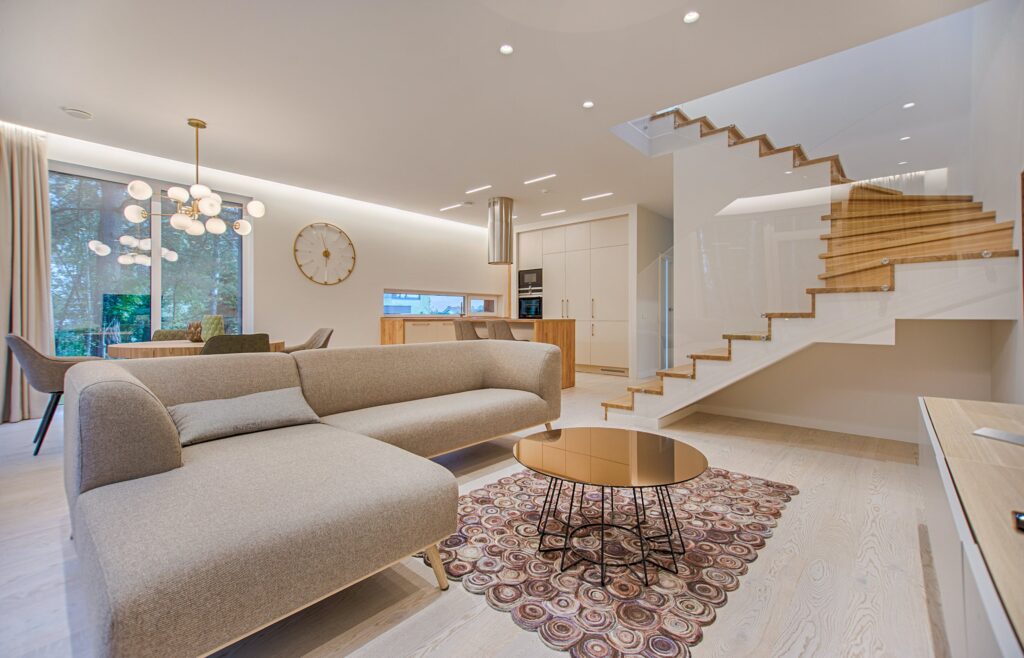
Universal Design: Creating Spaces That Welcome Everyone with Open Arms!
Hey there, inclusivity enthusiasts! 
So, what exactly is universal design?
It’s all about creating spaces that are accessible, intuitive, and downright delightful for everyone who walks through the door. Think wide doorways, zero-step entries, and easy-to-reach shelves—basically, design features that make life a little easier for everyone.
Ready to sprinkle some universal design magic into your space? Here are a few actionable tips to get you started:
Clear the Clutter: Say goodbye to clutter and hello to spacious, clutter-free living! Keep walkways and pathways clear of obstacles to make navigating your space a breeze for everyone, from little ones to those with mobility aids.
Slip-Proof Surfaces: Keep slips and spills at bay by opting for slip-resistant flooring in high-traffic areas like kitchens and bathrooms. Bonus points for choosing materials that are easy to clean and maintain—less time scrubbing, more time enjoying your space!
Light It Up: Shed some light on your space with plenty of bright, energy-efficient lighting. Think overhead fixtures, task lighting, and ambient lights to create a warm and welcoming atmosphere for all.
Comfort is Key: When it comes to furniture, comfort is king! Choose pieces that offer ample support and cushioning, with plenty of room to relax and unwind. Bonus points for adjustable features that cater to different needs and preferences.
Tech Savvy Solutions: Embrace the power of technology to make your space smarter and more accessible. From voice-activated assistants to smart home devices, there are plenty of high-tech solutions that can make daily tasks a breeze for everyone.
So there you have it, folks—your crash course in universal design! Whether you’re revamping your home sweet home or designing a brand-new space from scratch, incorporating universal design principles is a surefire way to create a space that’s welcoming, inclusive, and oh-so stylish. Let’s make the world a little brighter, one universally designed space at a time!
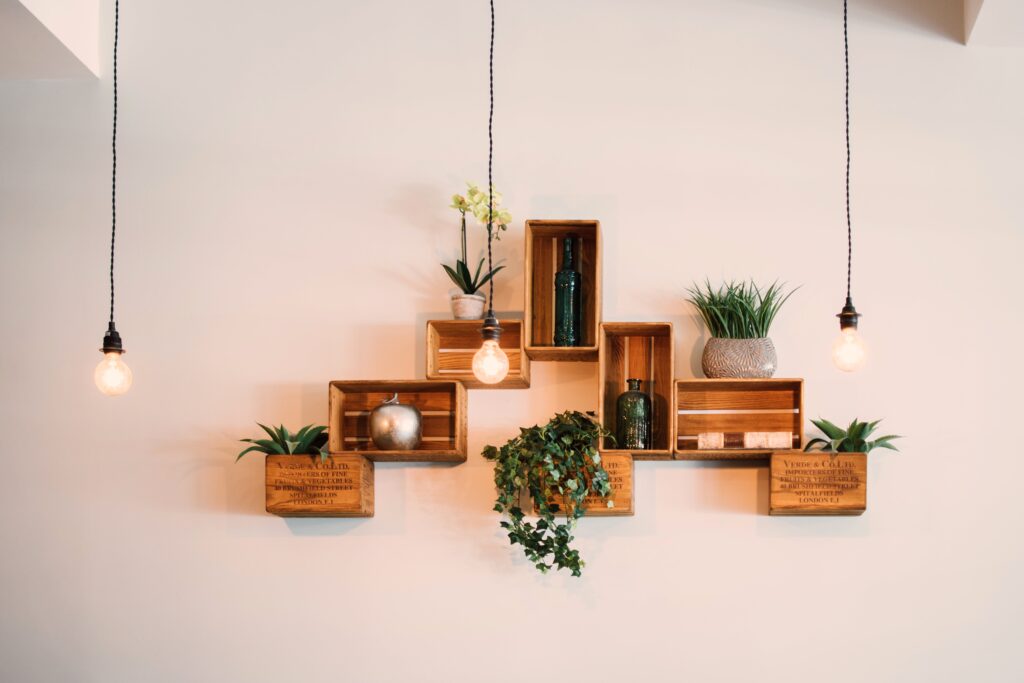
Holistic Design: Creating Spaces That Nourish Mind, Body, and Soul!
Hey there, fellow seekers of harmony and balance! 
So, what exactly sets holistic design apart from the rest? Here are a few key aspects that make it so special:
Mindful Material Selection: In holistic design, every material matters. From sustainable woods to non-toxic paints and finishes, every element is chosen with care to ensure that it not only looks beautiful but also contributes to a healthier indoor environment. Think natural, organic, and eco-friendly materials that are kind to both you and the planet.
Harmonious Color Palette: Colors have a profound impact on our emotions and well-being, and holistic design harnesses their power to create spaces that feel truly uplifting and nurturing. Whether you opt for soothing blues, earthy greens, or energizing yellows, the key is to choose colors that resonate with you on a deep level and promote a sense of balance and harmony.
Mindful Space Planning: Holistic design isn’t just about filling a space with furniture—it’s about creating a flow that feels intuitive and harmonious. Think open floor plans that encourage movement and connection, cozy nooks for relaxation and reflection, and multi-functional spaces that adapt to your ever-changing needs.
Nature-Inspired Elements: In holistic design, nature is your best friend! From indoor plants and natural materials to panoramic views and abundant natural light, bringing the outdoors in is key to creating spaces that feel grounded, rejuvenating, and full of life.
Mind-Body-Soul Connection: At the heart of holistic design is the idea that our homes are more than just physical spaces—they’re sanctuaries for our mind, body, and soul. Whether it’s a cozy reading corner to nourish your intellect, a serene meditation space to soothe your spirit, or a luxurious spa bathroom to pamper your body, holistic design embraces the idea that our homes should support our holistic well-being in every way.
So there you have it, friends—your crash course in holistic design! Whether you’re redesigning your entire home or simply sprucing up a single room, incorporating these key aspects of holistic design will help you create spaces that not only look beautiful but also feel truly nourishing and uplifting for the mind, body, and soul. Let’s design spaces that nurture and inspire us to live our best lives, one holistic design at a time!
Here are some actionable tips to help you implement holistic design principles in your home:
Declutter Mindfully: Start by decluttering your space to create a clean and calming environment. Let go of items that no longer serve you and keep only what brings you joy and adds value to your life.
Embrace Natural Light: Maximize natural light in your home by keeping windows unobstructed and using sheer curtains or blinds to let sunlight in. Consider adding mirrors to reflect light and create a brighter, more expansive feel.
Incorporate Indoor Plants: Bring nature indoors by adding houseplants to your space. Not only do plants purify the air and add visual interest, but they also have a calming effect and promote a sense of well-being.
Choose Natural Materials: Opt for furniture and decor made from natural materials like wood, bamboo, rattan, and stone. These materials not only look beautiful but also bring a sense of warmth and texture to your space.
Create Zones for Relaxation: Designate specific areas in your home for relaxation and rejuvenation. Whether it’s a cozy reading nook, a meditation corner, or a zen-inspired yoga space, having dedicated zones for self-care can help you unwind and recharge.
Use Aromatherapy: Incorporate essential oils and aromatherapy diffusers into your home to create a sensory experience that promotes relaxation and balance. Choose calming scents like lavender, chamomile, and eucalyptus to create a soothing atmosphere.
Personalize with Intention: Infuse your space with personal touches that reflect your values, interests, and aspirations. Whether it’s displaying meaningful artwork, family photos, or treasured mementos, surrounding yourself with objects that hold sentimental value can uplift your spirits and foster a sense of connection.
Prioritize Comfort and Ergonomics: Invest in comfortable furniture and ergonomic accessories that support your body and promote good posture. From ergonomic chairs and supportive mattresses to cozy throw pillows and soft blankets, prioritize comfort and well-being in every aspect of your home.
Practice Mindful Living: Cultivate mindfulness in your daily life by integrating mindfulness practices into your routine. Whether it’s practicing meditation, journaling, or simply taking a few moments each day to pause, breathe, and appreciate the present moment, mindfulness can help you stay grounded and centered amidst the busyness of life.
Regularly Refresh Your Space: Finally, remember that holistic design is an ongoing journey, not a destination. Regularly refresh your space by rearranging furniture, updating decor, and introducing new elements that inspire and uplift you. By staying open to change and embracing the evolution of your space, you’ll create a home that truly nourishes your mind, body, and soul.
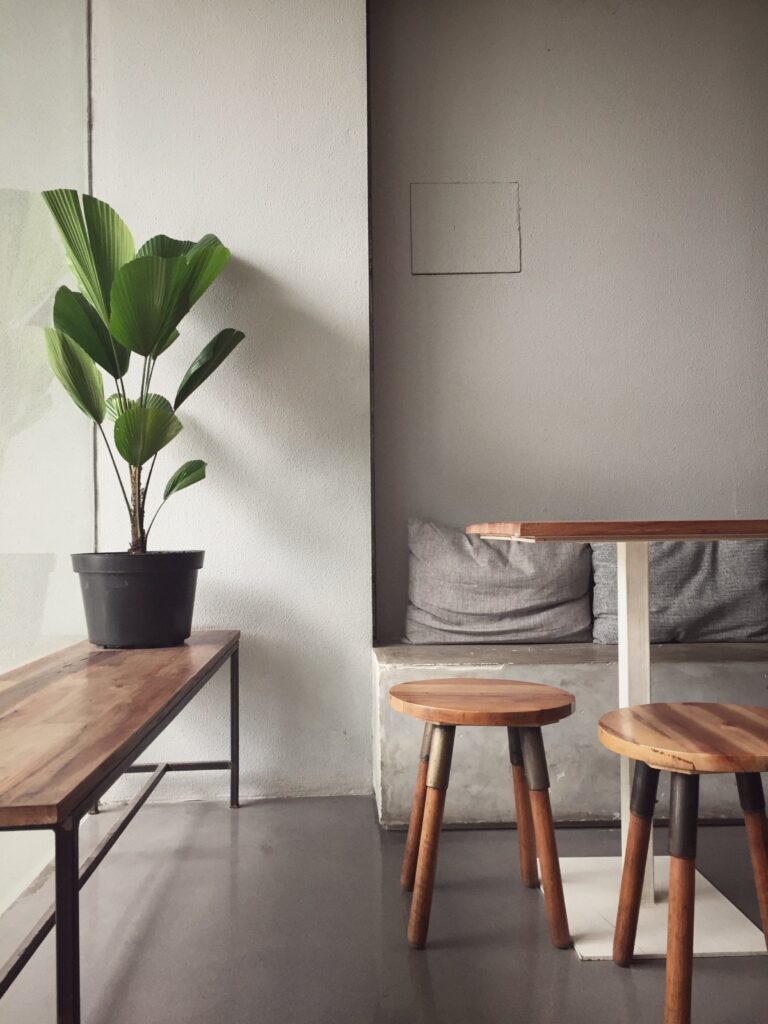
Welcome to the world of Wabi Sabi –
where imperfection is celebrated, and beauty is found in the simplicity of life’s fleeting moments. Let’s dive into this enchanting Japanese philosophy that embraces the beauty of the imperfect, the impermanent, and the incomplete.
Embracing Imperfection:
In the world of Wabi Sabi, perfection is overrated. Instead, it’s all about embracing the beauty of imperfection – whether it’s a chipped teacup, a weathered wooden table, or a cracked ceramic vase. These imperfections are not flaws to be hidden but rather cherished as unique markers of a life well-lived.
Finding Beauty in the Impermanent:
Wabi Sabi teaches us to appreciate the transient nature of life and to find beauty in things that are fleeting. Whether it’s the changing seasons, the fading colors of autumn leaves, or the delicate petals of a wilting flower, Wabi Sabi reminds us to savor the beauty of each passing moment, knowing that nothing lasts forever.
Simplicity and Serenity:
At the heart of Wabi Sabi is a sense of simplicity and serenity. It’s about stripping away the unnecessary and embracing a life of quietude and contentment. From minimalist interiors to serene landscapes, Wabi Sabi encourages us to create spaces that evoke a sense of peace and tranquility, free from clutter and excess.
Embracing the Unfinished:
In a world obsessed with perfection and completion, Wabi Sabi invites us to embrace the beauty of the unfinished. Whether it’s a half-finished painting, a partially completed project, or an open-ended conversation, Wabi Sabi reminds us that there is beauty in the process, not just the end result.
Living in Harmony with Nature:
Finally, Wabi Sabi encourages us to live in harmony with nature, recognizing our place within the natural world and honoring the rhythms of the earth. Whether it’s incorporating natural materials into our homes, cultivating a garden, or simply spending time outdoors, Wabi Sabi reminds us to connect with the beauty and simplicity of the natural world.
So, the next time you notice a crack in the sidewalk or a gnarled tree trunk, take a moment to appreciate the beauty of imperfection – and remember that in the world of Wabi Sabi, there’s beauty to be found everywhere, if only we have eyes to see it.
To find inspiration for Wabi Sabi design, you can explore various sources that celebrate simplicity, imperfection, and the beauty of the natural world. Here are some places to look:
Nature: Take a walk in the woods, visit a tranquil beach, or simply spend time in your garden. Pay attention to the textures, colors, and patterns found in the natural world, and let them inspire your design choices.
Art and Photography: Look for artwork and photography that captures the essence of Wabi Sabi – from abstract paintings with subtle imperfections to black-and-white photographs of weathered landscapes. You can also create your own art using Wabi Sabi principles as inspiration.
Japanese Culture: Dive into Japanese art, literature, and philosophy to gain a deeper understanding of Wabi Sabi. Explore traditional Japanese architecture, ceramics, and tea ceremonies, and draw inspiration from their simple elegance and reverence for imperfection.
Interior Design Books and Magazines: Look for books and magazines that focus on minimalist and naturalistic design styles. Pay attention to the use of natural materials, earthy colors, and minimalist furnishings that characterize Wabi Sabi interiors.
Online Platforms: Browse websites, blogs, and social media platforms dedicated to interior design and home decor. Look for hashtags like #WabiSabiDesign or #JapaneseInteriors to discover a wealth of inspiration from designers and enthusiasts around the world.
By immersing yourself in these sources of inspiration, you’ll be able to cultivate a deeper appreciation for Wabi Sabi design and incorporate its principles into your own living space.

Key Points:
Biophilic Design: Let’s bring the great outdoors inside! Fill your space with natural light, lush indoor greenery, and earthy materials to create a sanctuary that reconnects you with nature’s soothing vibes.
Minimalism: Less is more, my friend! Embrace the beauty of simplicity, declutter your space, and bask in the serene ambiance of clean lines and open spaces.
Feng Shui: Time to Feng Shui your way to good vibes! Arrange your furniture, incorporate plants, and channel positive energy flow to create a harmonious and balanced environment that’ll have you feeling zen in no time.
Scandinavian Design: Get cozy Scandinavian-style! Think warm, inviting interiors, natural materials, and a touch of hygge to create a space that’s as snug as a Scandinavian sweater.
Sustainable Design: Let’s go green, literally! Opt for eco-friendly materials, energy-efficient appliances, and sustainable practices to do your part for the planet while creating a healthy and eco-conscious home.
Universal Design: Design for all, folks! Whether you’re young, old, or somewhere in between, make sure your space is accessible and inclusive for everyone to enjoy.
Holistic Design: It’s all about the mind, body, and soul, baby! Take a holistic approach to design, incorporating elements that nurture your physical, emotional, and spiritual well-being for a truly enriching living experience.
Wabi Sabi: Embrace the beauty of imperfection! Let go of perfectionism, celebrate the charm of aged objects, and find beauty in the fleeting moments of life for a space that’s as unique as you are.
Related posts
Building Healthy Habits: Reframing your Thoughts
the art of doing your best
-Baba

